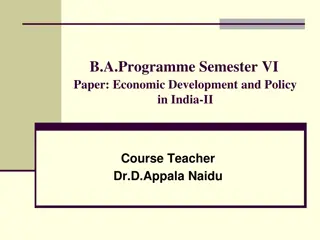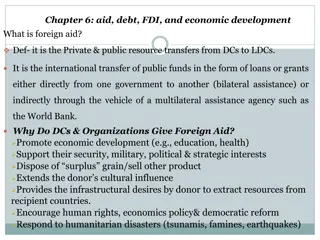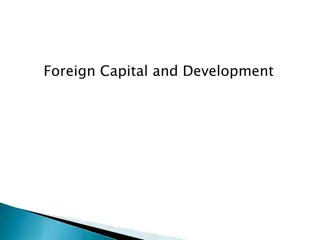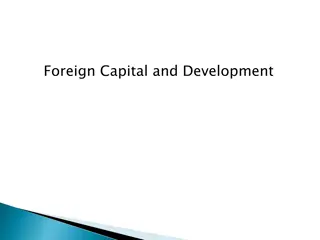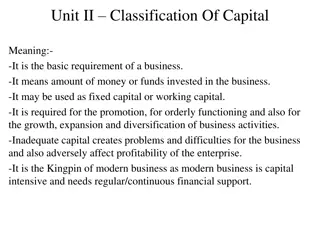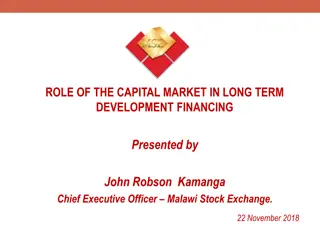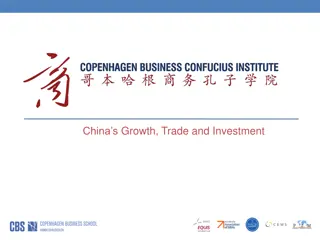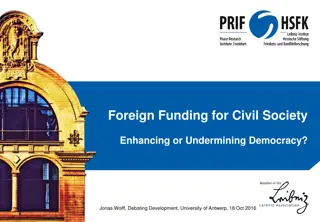Understanding Foreign Capital and Its Role in Economic Development
Governments worldwide strive to attract foreign capital to bridge the gap between domestic savings and planned investments, especially in developing countries like India. Foreign capital inflows, including FDI and loans, play a crucial role in driving economic growth and development. Different types of FDI, such as horizontal, vertical, conglomerate, and platform, cater to various business expansion strategies internationally.
Download Presentation

Please find below an Image/Link to download the presentation.
The content on the website is provided AS IS for your information and personal use only. It may not be sold, licensed, or shared on other websites without obtaining consent from the author. Download presentation by click this link. If you encounter any issues during the download, it is possible that the publisher has removed the file from their server.
E N D
Presentation Transcript
The governments of every country around the world look forward to attracting a sufficient amount of foreign capital as it plays a constructive role in the economic development of the country. Here, foreign capital is defined as the inflow of capital into the home country from international countries. The reason why the need for foreign capital arises in developing countries like India is that here domestic capital proves to be inadequate for economic growth. Foreign capital is viewed as a medium using which the gap between the domestically available supply of savings, government revenue, foreign exchange, and the planned investment can be filled development targets further. to achieve the country s
Foreign Capital Foreign capital refers to the inflow of capital into the home country through international nations either in the form of foreign investment (FDI or FPI), loans from multilateral agencies, including the World Bank, or loans from the governments of international countries. It is the foreign direct investment that majorly contributes to India s economic development.
Stating the types of FDI Foreign direct investment is categorized into two main types, and these are horizontal and vertical. However, the other two types of FDI emerged with time, and these are Conglomerate and platform. Horizontal FDI: Horizontal is the type of foreign direct investment in which a business expands its inland operation to another nation. Same activities are undertaken by the business but in an international country. Vertical FDI: It is a type of foreign direct investment in which a business expands into the other nation by moving to a distinct level of the supply chain. Therefore, it can be said that different activities are undertaken by the business overseas, and these activities are related to the main business. Conglomerate FDI: It is a type of FDI under which unrelated activities are undertaken by the business in an international country. This is considered uncommon as it is difficult to penetrate a new country and new market.






